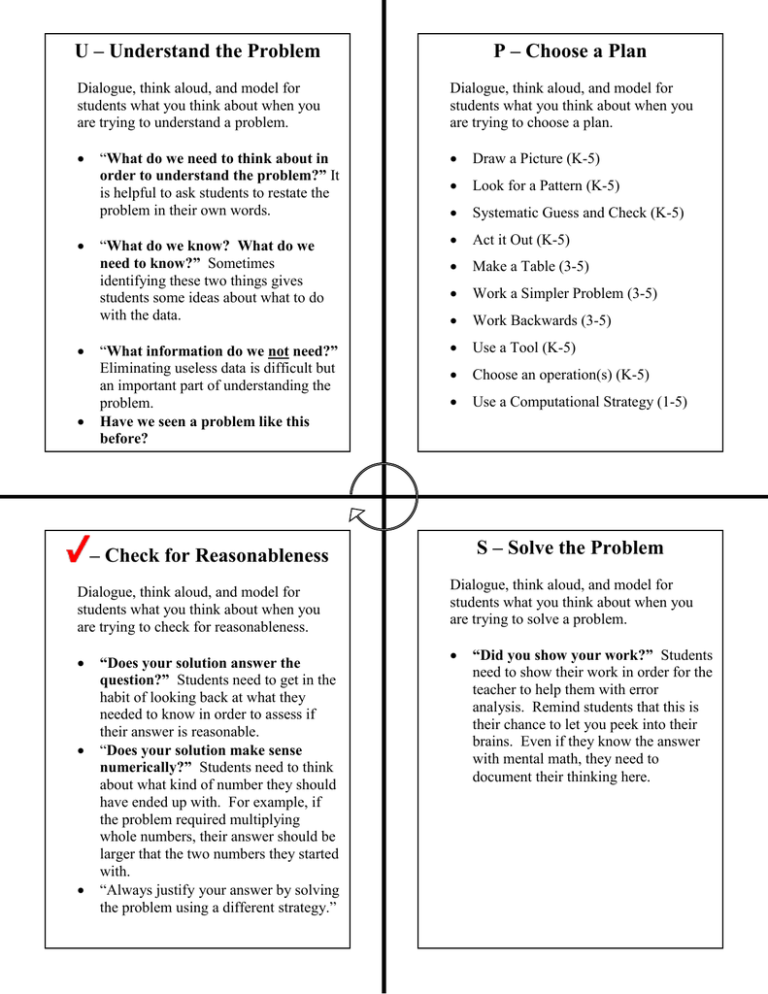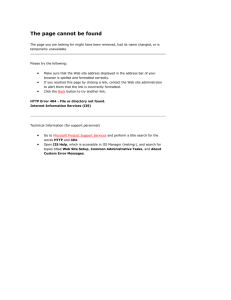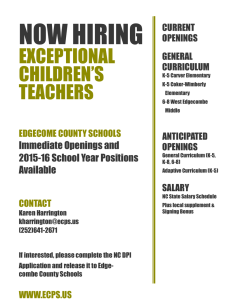U – Understand the Problem P – Choose a Plan
advertisement

U – Understand the Problem P – Choose a Plan Dialogue, think aloud, and model for students what you think about when you are trying to understand a problem. Dialogue, think aloud, and model for students what you think about when you are trying to choose a plan. Draw a Picture (K-5) Look for a Pattern (K-5) Systematic Guess and Check (K-5) Act it Out (K-5) Make a Table (3-5) Work a Simpler Problem (3-5) Work Backwards (3-5) Use a Tool (K-5) Choose an operation(s) (K-5) Use a Computational Strategy (1-5) “What do we need to think about in order to understand the problem?” It is helpful to ask students to restate the problem in their own words. “What do we know? What do we need to know?” Sometimes identifying these two things gives students some ideas about what to do with the data. “What information do we not need?” Eliminating useless data is difficult but an important part of understanding the problem. Have we seen a problem like this before? S – Solve the Problem – Check for Reasonableness Dialogue, think aloud, and model for students what you think about when you are trying to check for reasonableness. “Does your solution answer the question?” Students need to get in the habit of looking back at what they needed to know in order to assess if their answer is reasonable. “Does your solution make sense numerically?” Students need to think about what kind of number they should have ended up with. For example, if the problem required multiplying whole numbers, their answer should be larger that the two numbers they started with. “Always justify your answer by solving the problem using a different strategy.” Dialogue, think aloud, and model for students what you think about when you are trying to solve a problem. “Did you show your work?” Students need to show their work in order for the teacher to help them with error analysis. Remind students that this is their chance to let you peek into their brains. Even if they know the answer with mental math, they need to document their thinking here.


